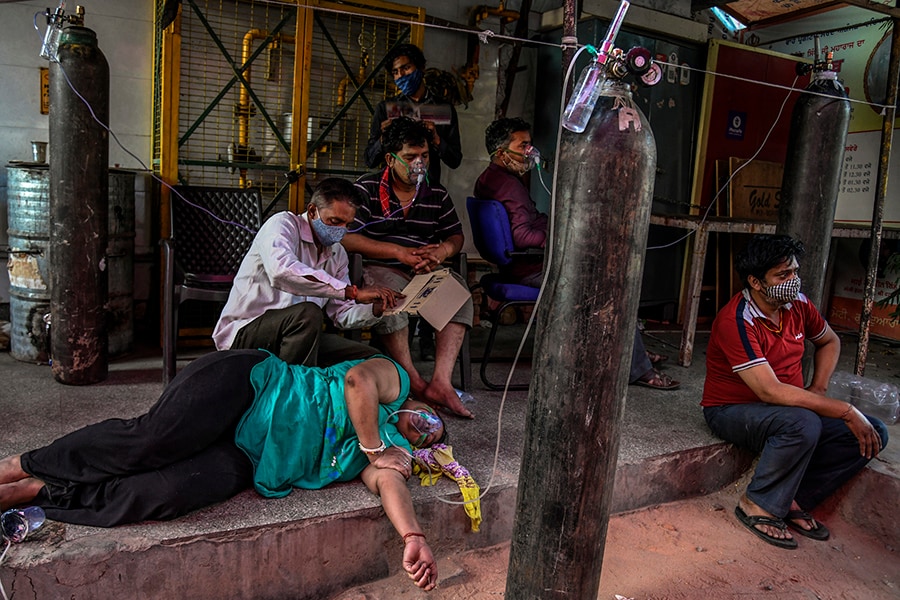
India blames a virus variant as its Covid-19 crisis deepens
So far the evidence is inconclusive, and researchers caution that other factors could explain the viciousness of the outbreak, which has overwhelmed India's capital so quickly that hospitals are entirely overrun and crematories burn nonstop
 Coronavirus patients are treated with oxygen at a gurdwara, a Sikh house of worship, in Delhi, India, April 25, 2021. India is now recording more infections per day — as many as 350,000 — than any other country has since the pandemic began, and that’s just the official number, which most experts think is a vast underestimation; Image: Atul Loke/The New York Times
Coronavirus patients are treated with oxygen at a gurdwara, a Sikh house of worship, in Delhi, India, April 25, 2021. India is now recording more infections per day — as many as 350,000 — than any other country has since the pandemic began, and that’s just the official number, which most experts think is a vast underestimation; Image: Atul Loke/The New York Times
NEW DELHI — At Sir Ganga Ram Hospital, a huge facility in the middle of India’s capital, 37 fully vaccinated doctors came down with COVID-19 earlier this month.
The infections left most with mild symptoms, but it added to their growing fears that the virus behind India’s catastrophic second wave is different. They wonder if a more contagious variant that dodges the immune system could be fueling the epidemic inside the world’s hardest-hit nation.
So far the evidence is inconclusive, and researchers caution that other factors could explain the viciousness of the outbreak, which has overwhelmed India’s capital so quickly that hospitals are entirely overrun and crematories burn nonstop. Still, the presence of the variant could complicate the taming of India’s COVID-19 disaster.
“The current wave of COVID has a different clinical behavior,” said Dr. Sujay Shad, a senior cardiac surgeon at Sir Ganga Ram Hospital, where two of the doctors needed supplemental oxygen to recover. “It’s affecting young adults. It’s affecting families. It’s a new thing altogether. Two-month-old babies are getting infected.”
India’s outbreak worsened even further on Wednesday, as authorities reported nearly 3,300 daily deaths. That brings the official total to nearly 201,200 people lost, though experts believe the true figure is much higher. Daily new infections also surged to nearly 357,700, another record.
©2019 New York Times News Service




